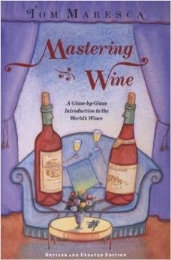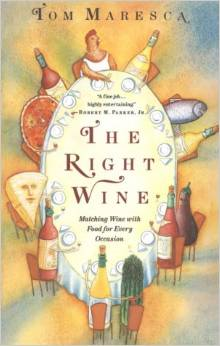I couldn’t wait any longer. I had to try it. This 1973 Cavalotto Grignolino, #4 of the special horde dubbed Tom’s Treasures, has been calling to me ever since I bought it.
Grignolino has become, in my mind, an archetypal, maybe the archetypal, Piedmontese wine. It’s a very ancient grape. Back in the 13th century, it was probably the most important grape in the whole Piedmont. Now it’s endangered and has almost disappeared, replaced largely by Barbera. But still, in the right place and the right hands, Grignolino is capable of yielding a lovely wine.
I have come to relish the variety, but I knew this was probably the riskiest of the bottles I chose. Grignolino is never a big wine, and it’s relatively low in alcohol, but it does have ample tannin and acidity, so there is a reasonable chance it could take some bottle age. As far as I knew, all the bottles I bought had been well cellared, and Cavalotto is a seriously good, traditionally minded winemaker. Who else would take the trouble these days to vinify Grignolino? So I had a fifty-fifty chance this 1973 would still be drinkable. Speriamo.
Well, I’m delighted to say that the wine was a complete winner from the moment I pulled the cork. A generous aroma floated out to greet me. A bit prune-y, to be sure, but definitely alive and welcoming, as its subsequent performance with our dinner amply showed.
The meal we were having that evening wasn’t designed to show off a Grignolino. The gaminess of the braised lamb shanks we were making wouldn’t really highlight its virtues. Grignolino is pale in color, light in body, and delicate and intriguing in flavor: not forceful, not a powerhouse. This one had only 12 degrees of alcohol and over 50 years of age, so no matter how alive it was, the lamb might overpower it. At least that’s what my last-minute jitters feared.
My worries were all unfounded. That ancient Grignolino more than held its own with the lamb shanks. It continued evolving and opening in the glass, as its initial pruneyness receded and surprisingly youthful fruit flavors came forward – cherry and currant and, very unexpectedly, strawberry.
We were bowled over by how much vitality this Grignolino showed, particularly when we tasted it with a cheese course. We had a young Manchego and a youngish Greyson, and the Grignolino showed its richest fruit with them. It never gave the slightest sign of fading or fatigue. From start to finish, it was a joy to drink.
I haven’t had much experience with mature Grignolino – very little, to be truthful – but this bottle taught me a lot. Biggest lesson: If I were several decades younger, I’d start cellaring Grignolino now.










